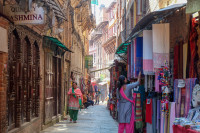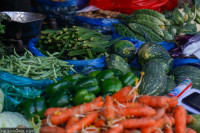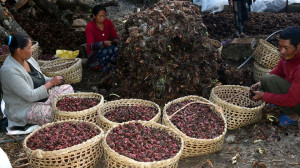Money
The art of making—and drinking—Marpha brandy
Distilled from the fermented mash of the apple itself, much of the stuff sold in Marpha falls into the category of fruit brandy.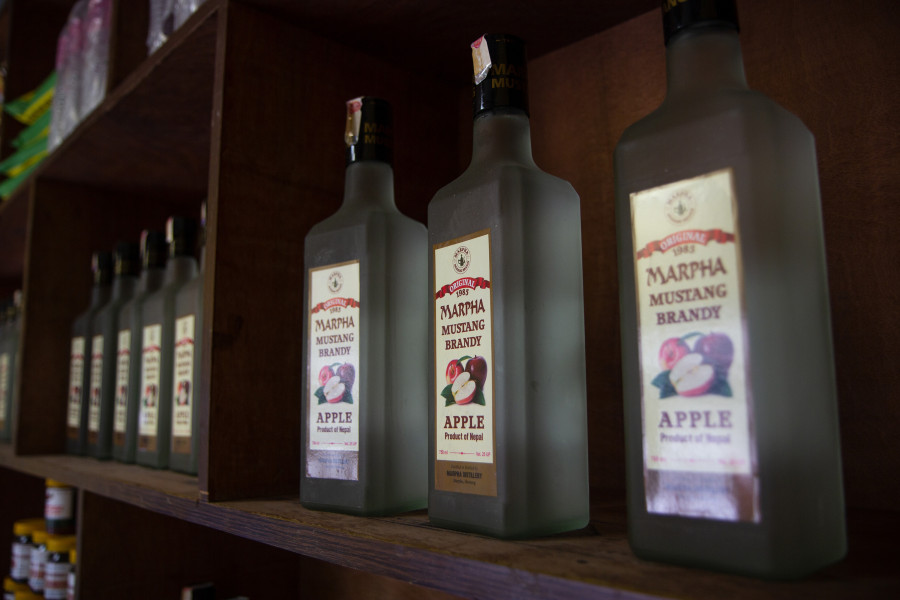
Chase Brush
In the dark backroom of his distillery in Marpha, Vishnu Raj Hirachan stoops low over a cask of clear liquid, an empty glass in hand. He turns the spout at the bottom, taking care not to spill as he collects the contents. But the liquid runs out too fast, and soon the glass is spilling over, suffusing the room with the sharp scent of alcohol.
“Can you drink this much?” Hirachan, coming up with a full cup still dribbling over at its edges, asks. Not one to pass on free liquor – especially not the kind pulled fresh from the tap –this reporter nods vigorously.
This is Hirachan’s “Marphak” brandy, a colorless but potent alcohol derived from fermented apples. It’s made right here, in Hirachan’s distillery, a squat old building that sits amidst his 400-tree-strong apple orchard on the outskirts of the village. The backroom, comprising the cask and four massive vats of liquor nearby, is where Hirachan keeps his supply in the offseason — and also where he offers tastes to curious visitors.
“I don’t usually drink,” Hirachan says as he pours himself a glass, which he dilutes with a splash of water, to bring out the flavour. “But since I have a guest...”
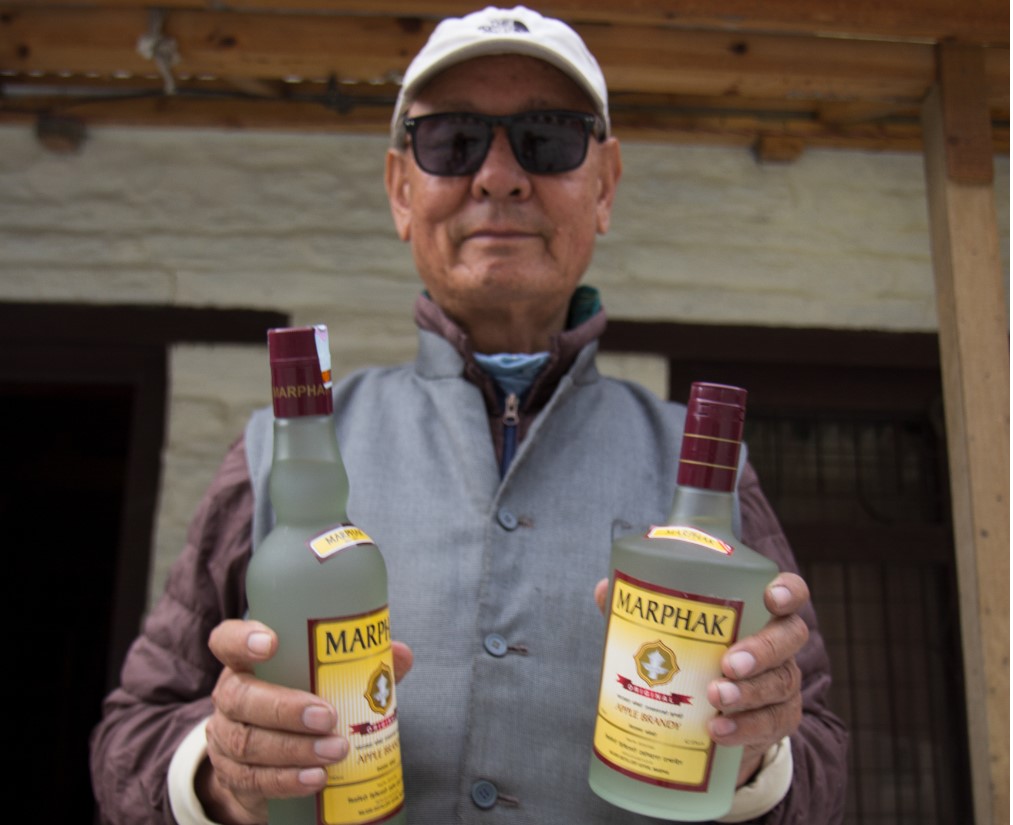
Situated on the banks of the Kali Gandaki, Marpha is an ideal place to try brandy—specifically apple brandy. Long renowned as the “apple capital of Nepal”, its fertile soil and temperate climate makes it particularly suited for growing the sweet, crunchy fruit, which serves as the bedrock of the local economy. Walking down the village’s narrow cobblestone streets, stopping to peruse the shelves of its storefronts and the menus of its myriad guesthouses, one finds apples in nearly every form imaginable, from dry apple snacks and apple crumble to apple jam, sauce, juice and cider.
Brandy, of course, is also one of those forms. Distilled from the fermented mash of the apple itself, much of the stuff sold in Marpha falls into the category of fruit brandy, a style distinct from the old-world brandies that use as their base cider or wine. And unlike the latter, which are usually put through a wood-barrel ageing process, most of Marpha’s brandies go straight from still to bottle, leaving them with the moonshine-like transparency— and in many cases taste —that typifies many fruit brandies of the world.
“The taste must be smooth, with no other flavours,” Hirachan says, lifting the glass to his nose. “And there should be no other smell. That should be removed during filtration.”
Hirachan should know—at 75, the Marpha native has been making brandy for much of his adult life. Fifty years ago, the Nepal government installed an agricultural outpost just down the road from here, on the property that Hirachan’s family originally owned. The office soon began introducing various varieties of apple trees to the region, including Red Delicious and Golden Delicious, and teaching local farmers to turn them into marketable products, such as juice, cider, and even wine. Naturally, it wasn’t long before someone—in this case, a man named Pasang Sherpa, the agricultural office’s first chief, according to Hirachan—came up with the idea to use the sugary fruit to make a more potent spirit.
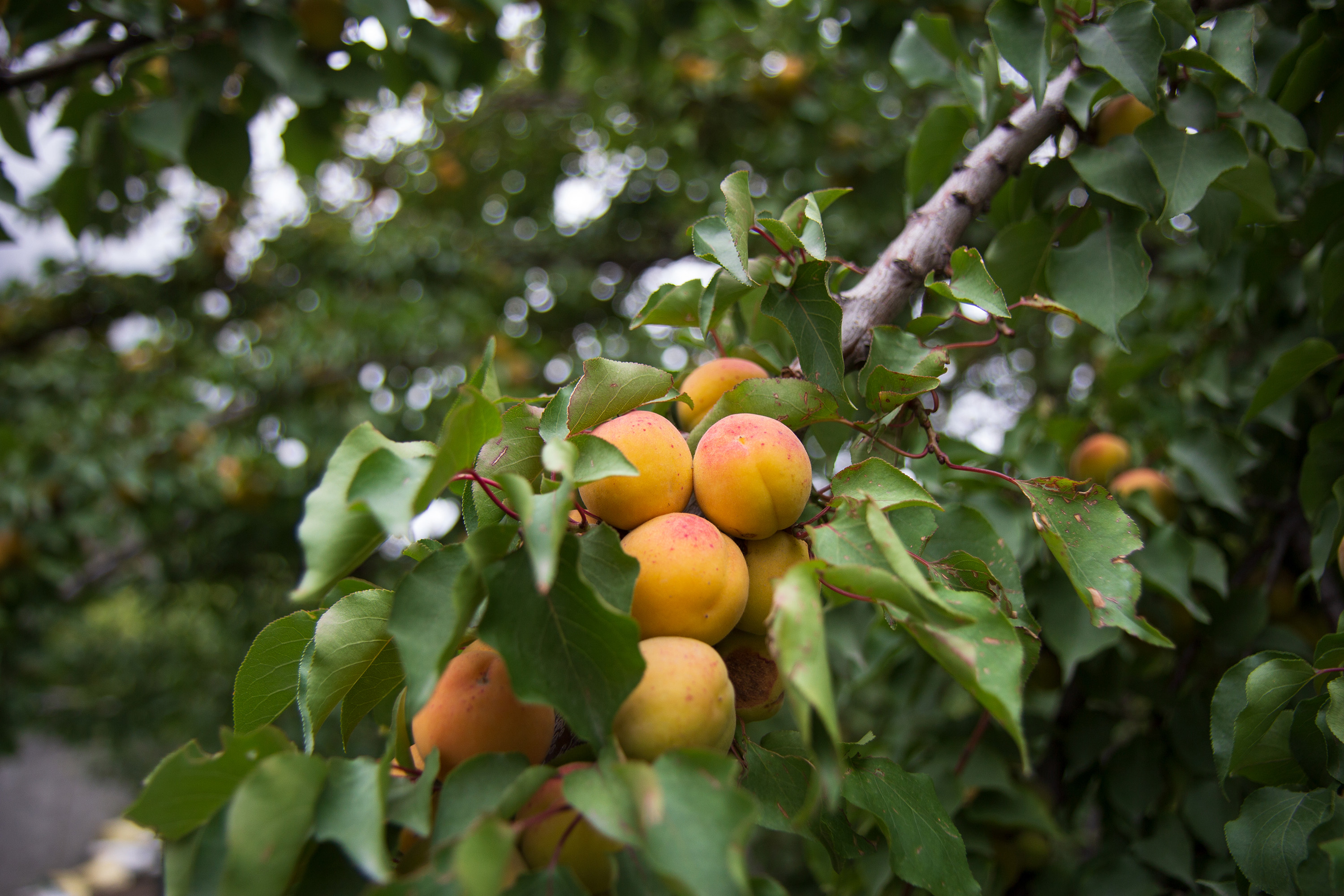
“At the time we were just young men who enjoyed a strong glass of alcohol,” Hirachan, who rarely imbibes these days, says. “We didn’t know there would be money in it.”
Today, there are at least five major distilleries in Marpha, including one operated by the agricultural centre itself. Marphak is among the more recognisable brands, distinguished by its red and yellow label, red cap, and frosted glass bottle, which Hirachan imports from India. It comes in two varieties, an apple and a “premium” apricot brandy, both around 42 percent alcohol. Hirachan produces over 2,500 bottles a year, distributed mostly in and around the Mustang region, though he says there is an increasing demand in places as far-flung as Kathmandu, where one bottle goes for Rs 1,000.
But the industry is not without its challenges, Hirachan is quick to add. Lately, apple farming in the Mustang region has been beset by climate change, as rising temperatures correspond with an increase in pests and diseases that can wreak havoc on crops.
“We have had to use more pesticides, which has made everything more costly,” Hirachan says. “The business is not as lucrative as it once was.”
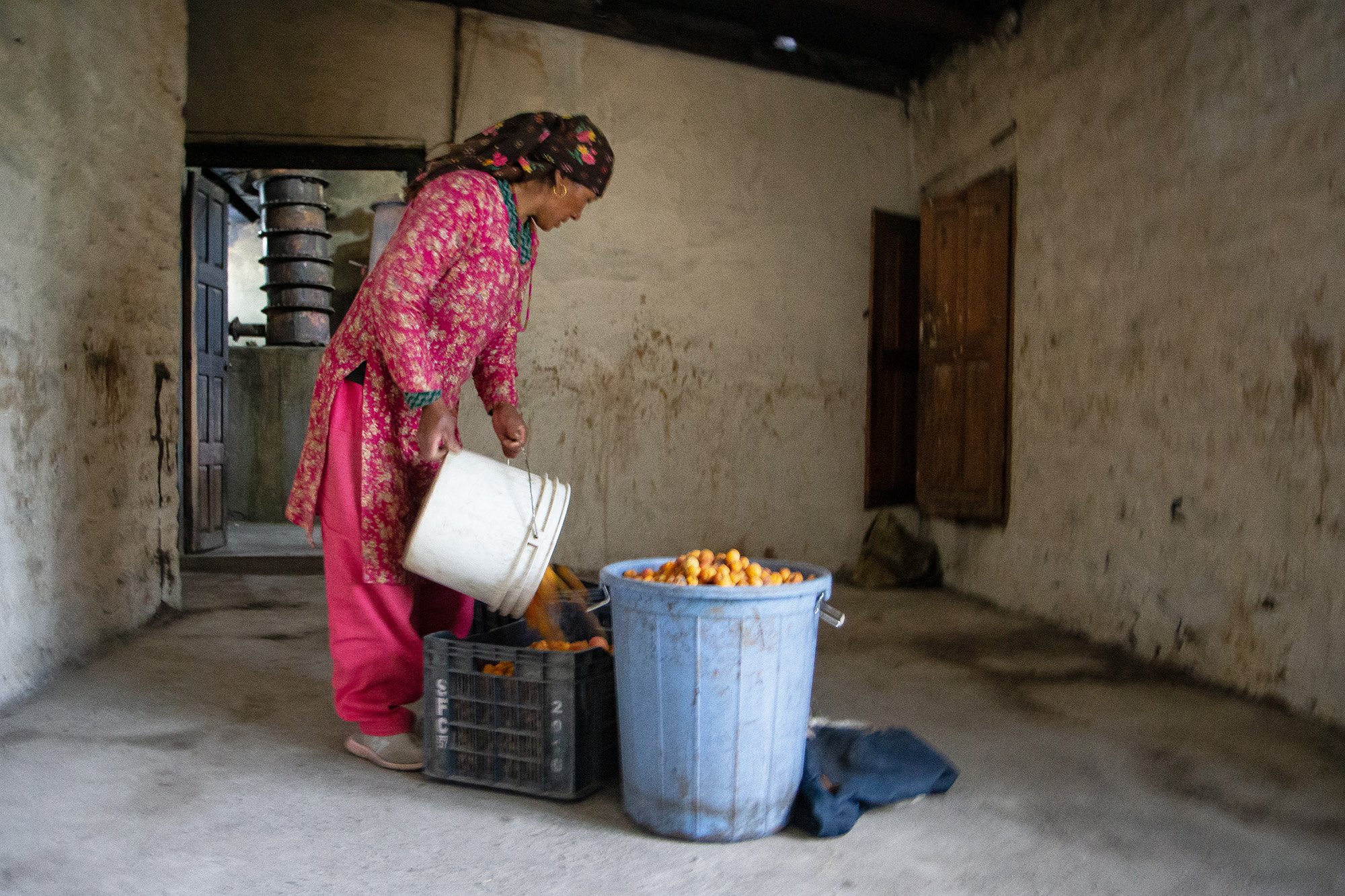
Still, brandy makers like Hirachan persist. Virtually all of the Marphak’s supply is brewed and packaged in the building on Hirachan’s farm, beginning with the harvest, which takes place in October for apples, and August for apricots. After it’s collected, the fruit goes to the washing area, where it is cleaned. Next is the fruit processor, into which the bulbous materials are fed to create a thick mash. Thirdly there are the tubs, inside of which the mash is mixed with some yeast and brown sugar and left to ferment for several weeks.
Finally, there is the elaborate—and ancient-looking—pot still, where the now-fermented mash is heated, the alcoholic vapour condensed, and the brandy ultimately released. Each batch distillation takes around four hours and can produce up to 90 litres of liquid, according to Hirachan, and the process is repeated throughout the year.
Hirachan’s brandy has clearly brought him a lot of success, but he takes no credit for it. At the end of the day, he says, it’s really all about the fruit.
“A good apple is the same as a good man,” Hirachan says. “If you are a good man, you will have success in all parts of life—a good job, good relationships, lots of money. It is the same with fruit—if it is good, it will make good juice, good pie, and good brandy.”
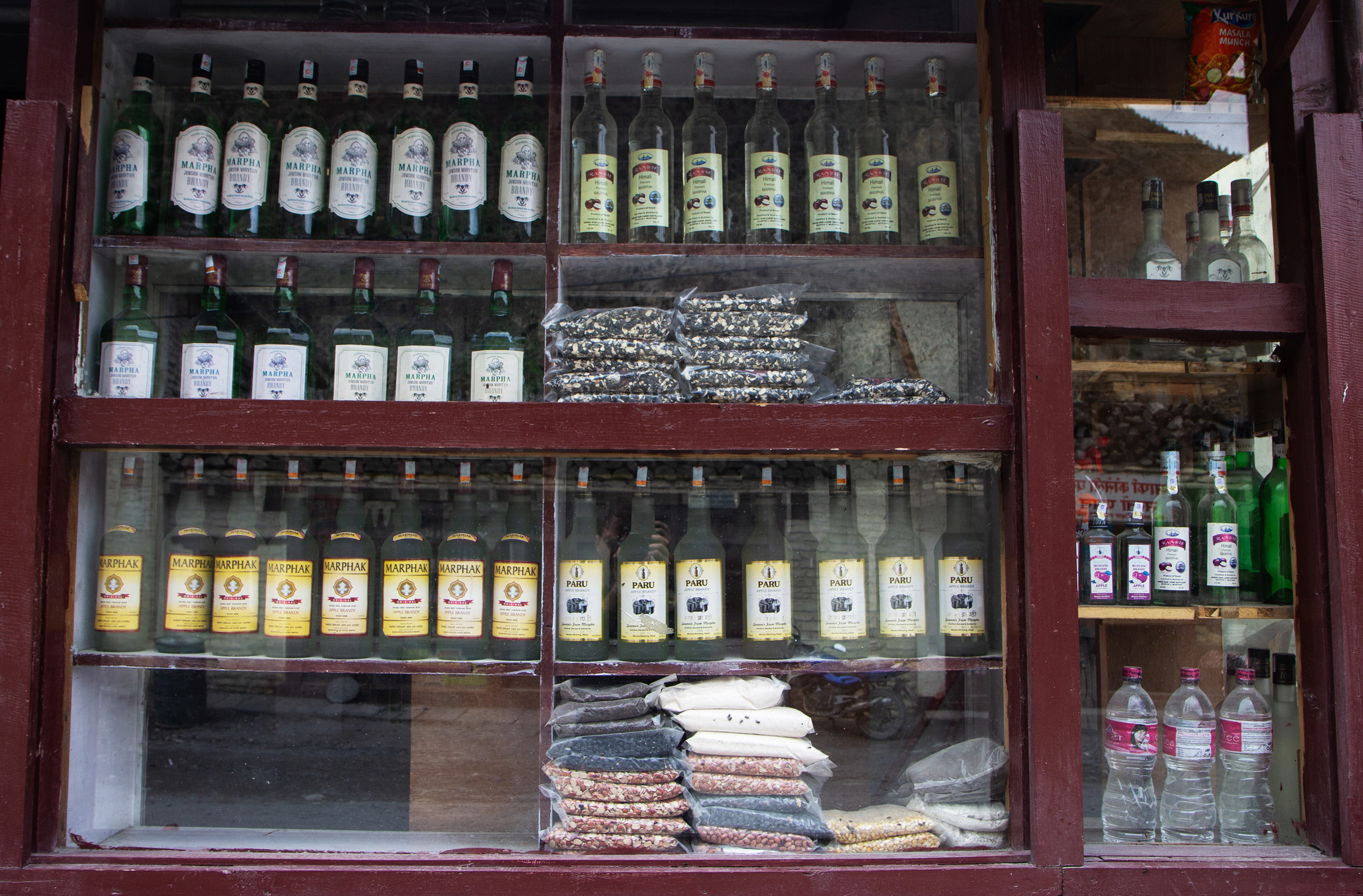
***
What do you think?
Dear reader, we’d like to hear from you. We regularly publish letters to the editor on contemporary issues or direct responses to something the Post has recently published. Please send your letters to [email protected] with "Letter to the Editor" in the subject line. Please include your name, location, and a contact address so one of our editors can reach out to you.




 5.55°C Kathmandu
5.55°C Kathmandu



